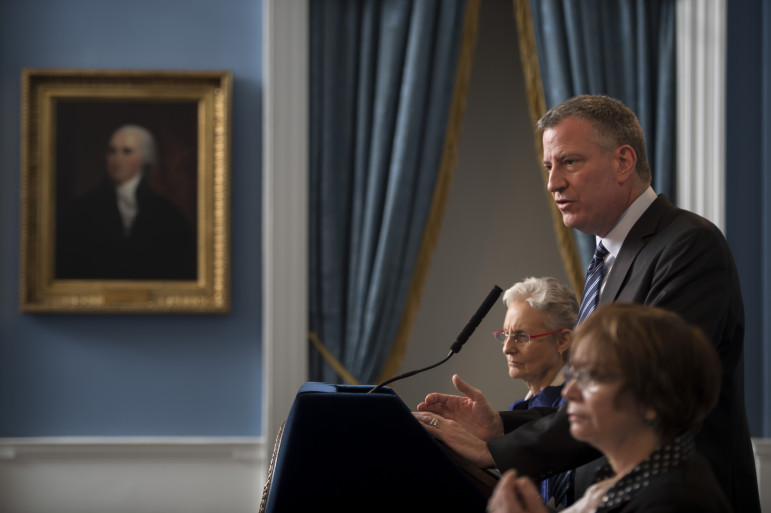
Just 17 days into his term, Mayor de Blasio (flanked by ACS Commissioner Carríon and Deputy Mayor Barrios-Paoli) discussed preliminary findings on the death of Myls Dobson, whose family had been investigated by city child-welfare officials.
In the first two months of 2014, news broke in the city of the deaths of 4-year-old Myls Dobson and 2-year-old Kevasia Edwards, one allegedly tortured and killed by a caretaker after her father went to jail, the other allegedly killed by her mother. Both children’s families had already had extensive contact with the child welfare system, although Myls’ case had been closed a year before his death.
Following Myls’ death, Mayor Bill de Blasio and the commissioner for New York’s Children’s Services, Gladys Carríon, announced a plan for a public service campaign encouraging all New Yorkers to report child abuse and neglect to the state central registry, suggesting in so doing that more child protective investigations were the key to preventing other children from suffering like Myls and Kevasia had.
In truth, more children have not died in 2014 than in previous years. By mid-November 2014, there were 88 deaths of children previously known to the system or reported to the system for investigation after their deaths, on par with the 93 such deaths in 2012 and 2013. The majority of such deaths are ruled accidental.
But the stories that made the news were painful and shocking to read, and gave the impression of a sudden spike in child fatalities. Following Myls and Kevasia deaths, in October the story broke of 3-year-old Jeida Torres, who was allegedly beaten by her stepfather and died in a homeless shelter in Brooklyn, followed less than a week later by 4-year-old Linayjah Meraldo, allegedly beaten by her mother in a homeless shelter in Queens.
Again, politicians lamented that if only child protective services had been called in, Jeida and Linayjah could have been saved. Brooklyn Borough President Eric Adams and State Sen. Kevin Parker proposed legislation that would expand mandated reporting of child maltreatment to include shelter workers, while on November 1, ACS released the first of three public service campaigns aimed at increasing child safety. The subway posters started with reasons people might offer for not making a call to report suspicions of abuse or neglect—”It’s Not My Business”; “I Don’t Want to Get Involved”; “But What If I’m Wrong?”—and ended with the admonition: “Isn’t a Reason to Stay Silent.”
Implicit in the campaign’s message is the idea that even if you, the teacher, the doctor, the neighbor, aren’t sure what’s going on behind a family’s closed doors, there are experts who can figure it out.
Child welfare statistics, however, suggest just how hard it is for “child protective specialists,” as the city calls them, to assess a child’s safety risk, with some children removed from unsafe situations or left at home safely, but others taken from their families who shouldn’t be, or left in danger.
They suggest, as well, that even in the best of circumstances, investigations cannot predict all child fatalities, and expecting them to is likely to increase the fear in poor neighborhoods of color where investigations are pervasive—and amplify the trauma of unwarranted removals—without decreasing the number of children who ultimately die.
A history of media pressure
“There is no correlation between the number of child fatalities and the number of removals. I don’t know why. I wish I knew,” Carríon said in an interview with City Limits. “But there’s been a lot of research on that and that’s what the statistics show, not only in New York but across the country.”
The Carríon administration has continued the historic trend of reducing the number of children placed in foster care each year, from over 10,000 in the late 1990s to 4,203 in 2013. But her administration, like previous administrations, has been forced back to the topic of child protection each time a child’s death makes the news. It has been forced there, as well, some advocates say, by a mayor who appears to be allowing media coverage to shape too much of his vision of child safety. They worry that a message that suggests that investigations are the primary tool for protecting children from fatalities could have the power to reverse that trend, as it has in the past.
Indeed, in 2005, then commissioner John Mattingly reduced the number of children entering foster care to a long-time low of 4,813 children, while 30 children previously known to the system died that year. Then in January 2006, Nixzmary Brown’s horrific death filled the papers, and 6,285 children were placed in foster care; placements continued to be high, at over 7,000, for the next four years.
As one former city child protective services worker recalls, the fear of another horrific death led workers to understand that when in doubt, they should pull children out.
Despite that, in 2006, the number of deaths to children known to the system actually went up, to 45. It is this history of a system driven by fears of the worst-case scenarios that makes advocates concerned when they hear the mayor saying that no child should die under his watch.
“It is unfortunate that the new administration started with so many media stories about child deaths, but we don’t believe that child welfare policy should be developed in response to media stories,” says Lauren Shapiro, director of the family defense practice at Brooklyn Defender Services.
Like many advocates, Shapiro applauds the mayor for putting front-and-center those issues that are most pressing for poor families, such as lack of affordable housing and lack of day care, which can lead already at-risk families to spiral downward.
At the same time, she says, increased child-welfare reporting and investigation have the potential to lead the system in a troubling direction. “It assumes that in any of these cases ACS could have predicted that a child would have died, and there is no evidence that you can predict such tragedies. Child deaths also make up such a small percentage of the cases that it’s misguided to create policy around them,” she says. “We already have a system in place that’s so punitive. Doing more investigations and having more reporting will only make the situation worse, because families will be less willing to seek help from the city.”
Decisions amid doubts
When one looks more closely at child protective statistics, the picture that emerges is of a decision-making process that is rife with uncertainty.
On the one hand, statistics that track how often families are reported to the statewide abuse and neglect hotline tell the story of families subjected to repeat investigations, seemingly without any forward momentum: Almost a third of families that were investigated for child abuse and neglect in New York City between January and May 2013 had four or more prior reports, according to a 2013 ACS Strategic Management Report.
In January 2012, then-Public Advocate de Blasio issued a review of 75 child fatality reports from 2011, 20 percent of which were determined to be homicides. In his review, de Blasio found that families in which fatalities occurred had, on average, five prior reports to the state central registry, with four families reported over 15 times—suggesting that even after more than a dozen investigations, investigators may still not be able to predict which children will ultimately prove to be in mortal peril.
Academics call it decision-making under uncertainty. It’s what happens when a child protective worker goes to a home and can’t figure out if the repeated calls by a former spouse alleging child maltreatment are legitimate cries for help or the revenge strategy of an angry ex-. It’s the confusion a worker feels when she faces a young couple in the heat of anger and doesn’t know if they need to be referred to counseling, or made to separate to protect the children from a pattern of domestic violence that’s likely to escalate. It’s the uncertainty a worker feels when she sees that children have no beds, and doesn’t know whether to label it neglect, or poverty.
“In cases of child deaths, there are investigations which often find red flags,” says David Lansner, a civil rights lawyer and former co-chair of New York State Citizens Review Panel for Child Protective Services. “But there are hundreds of cases that have those same red flags that don’t result in a death.”
On the other hand, many families are separated by child protective investigations every year without just cause. According to the Department of Health and Human Services, nationwide approximately 40 percent of children removed from their homes on an emergency basis—or about 85,000 children a year—are later returned without a finding of abuse or neglect. New York City has made major reductions in the number of children removed on an emergency basis—down from 73 percent of removals in 2009. Still, in the first ten months of this year, 40 percent of children removed from their homes were removed without court approval.
Sometimes emergency removals are made because children truly are in imminent danger. But other times, advocates for parents and children say, emergency removals are made out of fear of what would happen to the child, the worker and the agency if a child was left in a home and something terrible happened, without adequate weight given to the devastating impact even short-term removals can have on children.
“Even after just a short removal,” says Caitlin Becker, supervising social worker at The Bronx Defenders, which represents parents accused of abuse and neglect in Bronx Family Court, “our clients tell us that their children are not the same kids. They’re more withdrawn, more timid, they’re not as playful. They have trouble in school and behavior problems they never had before.”
Dawn Post, co-borough director of the Children’s Law Center in Brooklyn, adds that “once a child is removed, the momentum of the case often means it takes a long time before we can get that child home. In the meantime, children are terrified. They have no idea what’s going to happen to them.”
Other times, removals can have more severe consequences, as in the case of Poseidon Quinones, 3, who was allegedly beaten to death this November by his grandmother’s boyfriend in his paternal grandmother’s home, where ACS had placed him after removing him from his mother after she was arrested during a fight with Poseidon’s father. At other times, it can leave children vulnerable to the kind of maltreatment the system wanted to protect them from in the first place. According to a report by the City Council, there were 2,165 reports of abuse or neglect in fiscal year 2013 made on behalf of children in foster care—or one report for roughly every five children—with 31.5 percent of those reports substantiated.
Shame and fear in communities of color
In truth, most children whose families are investigated are not removed. Of the more than 55,000 investigations that ACS conducted in 2013, 38 percent were found to have maltreated their child in some way, and of those, approximately 20 percent led to a removal.
But investigations in and of themselves can be terrifying to families, and particularly to poor families of color, who may already have significant hurdles to overcome.
In 2013, staff at the school Piazadora Footman’s son attended called in a report against her, alleging that her son had welts on his back. Footman was in conflict with the school at the time over whether her son was receiving adequate services. But when the investigator came to check, she saw no welts, only the traces of magic marker that Footman’s daughter had drawn on her son the night before, while mom was sleeping.
Ms. Footman says the investigator was careful and considerate, and after a few weeks she closed the case, saying: “Ms. Footman, you don’t need a case with us.”
But during those weeks, Ms. Footman, who had lost custody of her son for several years when he was an infant due to a drug addiction, was terrified. “I didn’t know what they were coming for. People make up things. Then I thought they were going to make this marker issue a very big deal. I thought they were going to ask me, ‘What were you doing when your kids were coloring on each other?’ I thought they were going to say I was a neglectful mother,” she recalls. “But I’m not a neglectful mother, not now.”
Footman is also a mother who has learned to advocate for herself and her three children, in part by attending a training program at the Child Welfare Organizing Project (CWOP), an advocacy organization of parents affected by the child welfare system.
But Sandra Killett, executive director of CWOP, says many parents don’t have the kinds of advocacy skills that Footman has. Instead, she says, in poor communities of color that already feel shamed and blamed for all the ills of society, investigations frequently lead families in crisis to hide their problems. In that context, a public call for more reporting of suspected abuse and neglect makes it that much harder to reach out for families to reach out for help. “This is a society that is already isolated. That message is just putting them in more isolation,” says Killett.
A stubborn number of deaths
Frequently, the casualties of child protective investigations are explained as the unfortunate, unintended consequences of keeping children safe. But the stability of the number of deaths of kids known to the system suggests no connection between aggressive ACS action and reduced child fatalities, or vice versa.
There has, for instance, been no increase in child fatalities in recent years even as ACS has continued its historic trend of bringing down the number of children in foster care, from over 50,000 in the mid-1990s to just over 11,000 today. Indeed, in 1997, there were 13,345 children placed in care, with 43 deaths of children previously known to the system, while in 2010, 7,108 children went into foster care, with 39 such deaths.
The sense of futility these numbers suggest was summed up in May of this year by former ACS commissioner Mattingly at the launch of an initiative by the Annie E. Casey Foundation to improve child protective investigations around the country.
“In our experience in New York,” said Mattingly, who ran ACS from 2004 to 2011, “we found that many times a case was opened for investigation, closed, substantiated, closed, unsubstantiated, opened again, opened again. You could really not tell the reason why a particular case was treated the way it was, but the bottom line always was ‘closed without action.'”
“We’re afraid that the long-time CPS practices and procedures really fail to provide us with enough discernment to know which children need protection and which don’t,” Mattingly continued. “Too often our only response as a system is to knuckle down and keep going the way we have beforehand.”
Mattingly’s description of his experiences in New York are not unique. In 2013, Congress created a task force to try to understand and prevent child fatalities after decades of reforms and failures in child protection systems across the country.
The task force is expected to present a report to Congress and the president at the end of 2016 that will offer a model of best practices for child protection, but earlier this month, one member of the task force told the press that if there is a child protection system that could serve as such a model, they have yet to find it.
A system for the poor
Despite his own stark assessment, Mattingly believes that investigations are the primary tool we have to protect children who are in danger—and that it’s unacceptable for a society to allow children to be left alone in the midst of abuse or neglect without trying to reach them. Which is why, in the three years since leaving office, Mattingly has worked with dogged persistence to spread practices he believes will improve child investigations.
But 96 percent of children in New York City’s foster care system are black or Latino and almost all of them are poor, and others say it’s unacceptable to continue subjecting poor communities of color to such invasive interventions in the name of child safety when, too often, we don’t know whether we are making children more or less safe, or which is worse, the sickness or the cure.
“The standard of practice in child protective investigations and in the family court has been so low that decisions are frequently wrong about what happened in the past,” says Lansner. “But we’re expecting the same system to predict the future. Even the most experienced psychiatrists, psychologists and pediatricians have very little success in predicting future behavior, and our system doesn’t use experts. We use caseworkers, who have limited education.”
Even if real investments into improving investigations could make a difference, Lansner says he doesn’t believe we have the social will to make those investments. “This is a system for the poor,” says Lansner. “The people who run it would never put their own children into it and society isn’t going to put more money into it either.”
A ‘helping agency’
Just what role the current commissioner believes investigations should play in keeping children safe is less clear.
Born and raised in the South Bronx, Carríon began her career as a lawyer representing poor parents there, and later became a champion for young mothers in the foster-care system as the outspoken head of Inwood House, a residence for pregnant teens.
When Carríon took office, she committed ACS to become more of a “helping agency” under her watch, one whose focus would look beyond child protection to child well-being. Still, it is Carríon’s job to oversee the city’s child protection system, and it is her job as well, to answer to the public when a child dies.
When asked to assess the city’s ability to keep children safe, Carríon pointed out that today ACS has one of the lowest CPS caseloads in the country; following Myls’ death the mayor and commissioner announced a plan that would put an additional $25.2 million into ACS’s child protective budget for fiscal year 2016, and reduce further the caseloads of workers in the units with the highest caseloads, from 12 cases per worker, to 8.
Carríon added that the city’s preventive service system, which serves 25,000 children a year, has increasingly moved to evidence-based models that have been proven to reduce abuse and neglect even among high-risk families. Carríon said her administration is working with the National Implementation Research Network* to make sure that the city’s preventive service agencies are implementing evidence-based practices.
She also says her administration aims to meet the greater need for preventive services that they see in the city. Carríon pointed to the mayor’s newly created Children’s Cabinet, which looks at bureaucratic impediments between city agencies that impact child safety, as an important initiative. One place the commissioner is looking, in particular, is at improving coordination with New York’s Department of Homeless services, since approximately 25 percent of the families in the city’s homeless shelters are child welfare-affected.
Nonetheless, Carríon added: “Every time a child dies we have to ask ourselves, ‘What could have prevented this fatality?…What could we have done differently?’ Every time a child dies, the mayor says to me, ‘Gladys, we have to keep children safe. We have to do better.'”
A new approach
At other moments, however, Carríon expressed frustration at her inability to move the media attention away from a focus on the failures of child protection to a larger conversation about child well-being. “We get criticized for being intrusive,” she said, “for making assumptions or presumptions about families when we’re trying to ascertain will this child be safe. Then, when something happens, we’re told: ‘You should have known.’… It’s a no win situation.”
When asked if she thought the mayor was allowing child deaths to have too much power in determining child welfare policy, Carríon answered: “The mayor is a parent, and as a parent, he’s very concerned whenever a child dies…I think that it’s a natural response certainly for a layperson and for the leader of the city.” But, she added, the fact that the media only pays attention to the work of the agency when a child dies makes it harder to get out the message that what high risk families need most is a “public health frame to improve child well-being.”
Carríon said her hope is that ultimately Family Assessment Response (FAR)—a less adversarial system that states across the country have adopted to respond to what they deem less high risk cases—will become the default option for the city. The administration is currently looking for ways to expand FAR beyond the one neighborhood in Queens where it has been piloted for the last two years, and to expand the kinds of cases that are tracked into it as well.
Under FAR, if an investigator believes a child is in imminent danger, the child is removed or services put in place to reduce the danger. But after that, the role of the worker is to encourage families to get help, not investigate wrongdoing or mandate services. It is a system that has been adopted in some measure by more than half the states in the country, including parts of New York, although it is facing its own controversy after a spate of child deaths in Minnesota, where it has been most widely implemented.
Still, Carríon noted that making sure FAR is implemented properly in such a big system as New York’s could take years. In the meantime, she said, it’s her agency’s duty to investigate every case that comes in. “I didn’t write the law,” she said, “but it is my job to enforce it.”
All City Limits’ child welfare coverage is underwritten by the Ira W. DeCamp Foundation.
* The name of this organization was corrected after initial publication.


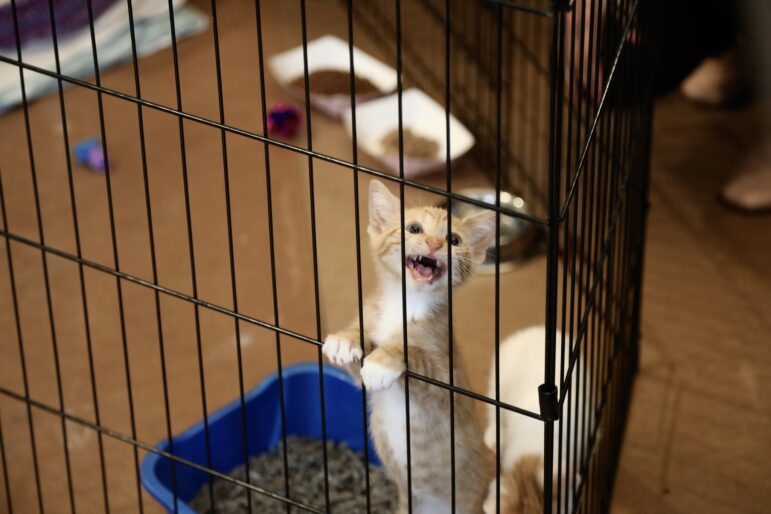
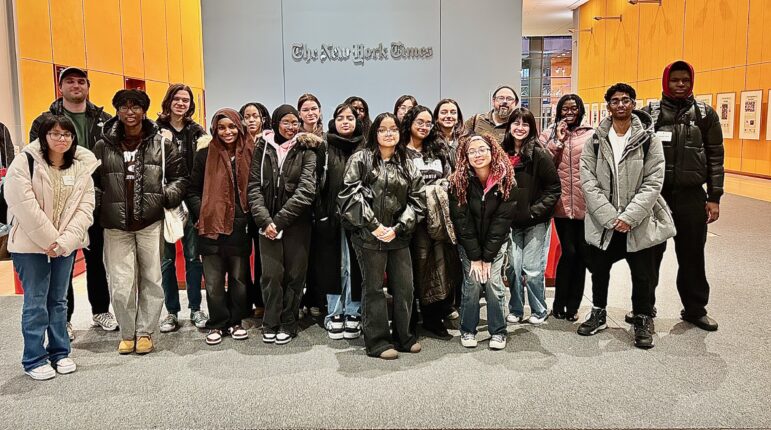

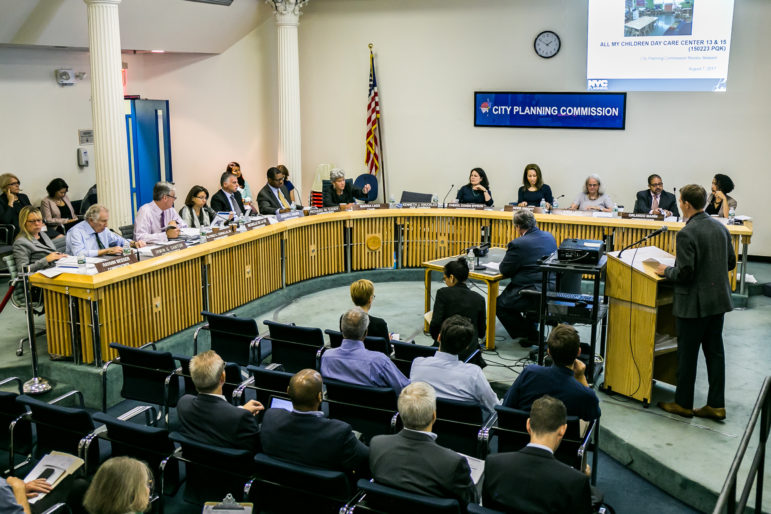
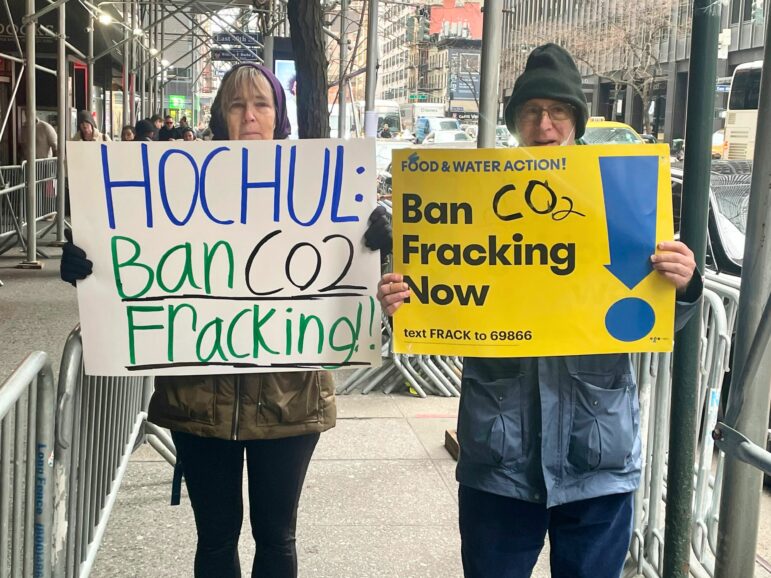


5 thoughts on “The Limits of Protection: Can Mayor’s Push Reduce Child Abuse Deaths?”
The best way to keep children from being fatally abused is to keep the abuse from starting in the first place. Stop Abuse Campaign is in the process of changing Erie County NY from a county experiencing regular child abuse fatalities to a county that prioritizes, and invests in, prevention. You can learn a little more about it by reading this petition, and if you agree with the idea, sign it https://www.change.org/p/stop-erie-county-s-children-being-abused-and-murdered
I am a NYC advocate from FPA-Foundation-www.fpafoundation.org-The problem is people are not doing their jobs correctly and are targeting poor families. No accountability for ACS and the foster care agencies is the biggest problem. The agencies are bias and racism from family courts against the parents and the way the court appointed attorneys are not helping the parents get their children back but have sided with ACS to put their children up for adoption for federal incentives. The family courts and attorneys are violating parents rights. They continue to violate the rights of children & families. This system is a failed system with fail outcomes for too long. Professional continue to sugar coat the matter because it is blacks & latino being targeted. Most kid in foster care end up homeless or abuse in the same system that is suppose to protect them. We need to dismantle ACS and get a new system or oversite over ACS to take a look at these cases. I have seen too many families being torn apart by a system that claims to protect. Title E funding has corrupted the system. It all about the federal money and not the children & families. Its Racism and greed that keeps the system going off the back of poor families.
Hello Ms Mathews, I am a parent an I fall into the category of being a poor family. My children have been wrongfully taken away from me and wrongfully adopted by the court and ACS in Queens, I’m 31 I have 5 children well 6 but 1 don’t know me at all and I am learning disabled with a hearing problem that I was born with. I would like to meet you and talk to you in person maybe you can help me win my children back in my life , I have done all of my services got 8 certificates from doing parenting an anger management been to 4 different shelters and still to no prevail didn’t get back any of my children. The reason why I said that I would like to meet and talk to you face to face is cause I can barely explain to you what has happened to me an my children here in writing as I said im a learning disabled parent and to write it out in explanation is kinda difficult due to uncapable of spelling my words the right way also I don’t want my business out there to everybody. Please inbox me on facebook @ TriniGal Dangerous Trini
Please call the office if you need help 1-646-402-6133
Ok I will have my mother help me with this call either tomorrow Morning or Tuesday Morning. Thank you Ms. Matthews